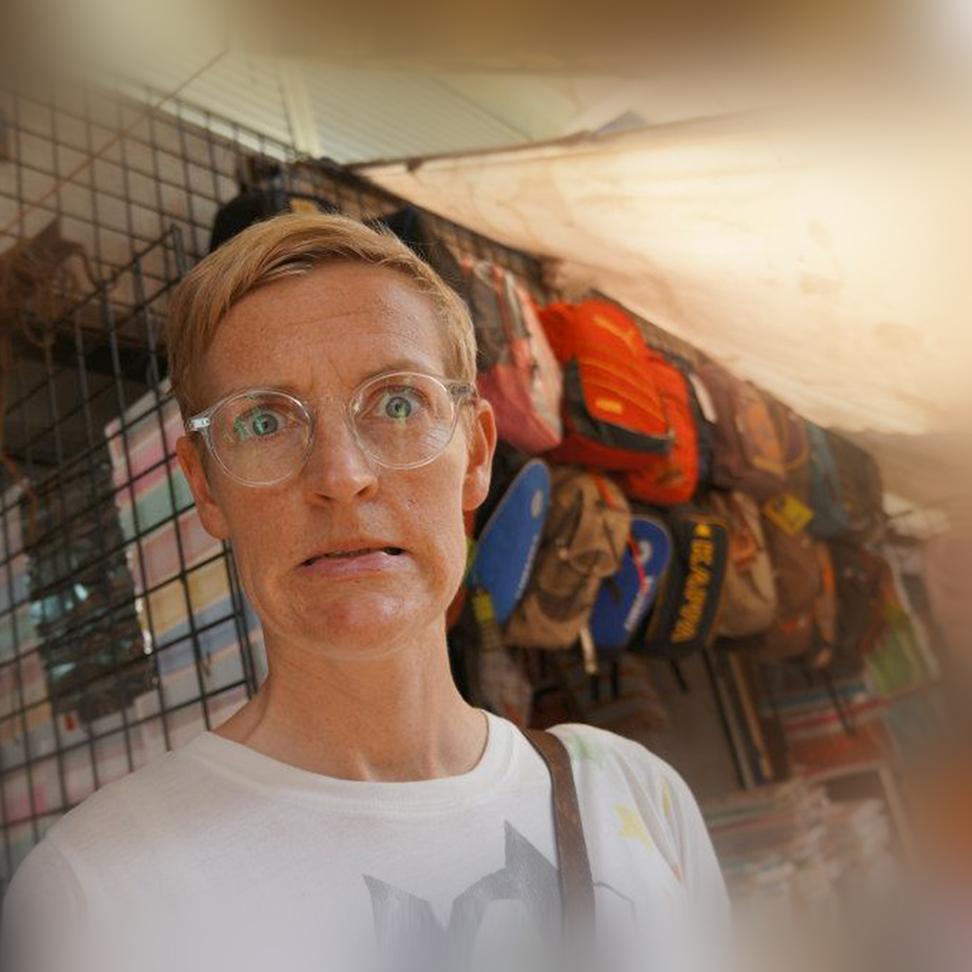Approximately one in four people have a fear of flying. This can range from a, “I’m not that keen on flying”, to an absolute refusal to get on to an aeroplane. Whichever it is, it can mar an otherwise perfectly enjoyable holiday at the very least, and at the worst, it can completely prevent people from going on holiday and visiting loved ones in far-flung lands.
No matter where on the scale you might sit – it is possible to get over fear of flying. We got in touch with Patricia Furness-Smith, a psychologist with more than 25 years of experience dealing with phobias, and a permanent team member at the British Airways’ ‘Flying with Confidence’ course, and asked her where a fear of flying comes from, and how we can overcome it.
Why is it we can be so scared about flying, but not – for example – driving a car every day?
We are land animals. We are not fundamentally designed for flight, hence we can experience this phenomenon as feeling alien or strange. When we are frightened the more primitive emotional brain is in command and the rational cortex is largely ignored, so all the statistics which provide the empirical evidence that flying is overwhelmingly far safer than driving, go over the frightened person’s head.
It is in fact 100 times more dangerous to drive than fly. This shouldn’t be surprising since the world of aviation operates a policy of zero tolerance for anything that can compromise our safety. Pilot training is in-depth and arduous with regular ongoing checks to ensure skills are kept tip top and aircraft go through a plethora of routine checks between every landing and take-off.
Add to this safety formula the extensive in-built redundancy of wing, engine, computer and fuel capacity and you have the safest mode of transport on the planet by a very compelling margin.
It is not by accident that the Americans put their president in the air when they have civil unrest as flying is the safest thing anyone can do (it is 18 times safer than staying at home and 10 times safer than being at work).
Where does a fear of flying come from?
It’s normal to be scared – but it’s perfectly safe
Becoming a parent is probably the single most common trigger for developing a fear of flying and this is for two reasons.
Firstly, we are programmed to protect the next generation and anything that we perceive as compromising this aim will lead to us trying to avoid it at all costs. Secondly, having a child, although a wonderful event, causes a monumental amount of change for parents: they are no longer just responsible for their own well-being and must alter their routine in accordance with the baby’s needs.
Another common reason is because of a perceived bad flight due to turbulence. We ensure that our delegates fully understand that turbulence may be experienced as uncomfortable but it is never ever dangerous: aircraft are structured so that they can comfortably withstand turbulence.
What kind of fears do people go in with on the Flying with Confidence course?
The course is a powerful and emotional experience for all involved. Delegates arrive in the morning looking very tense and sometimes tearful and are scarcely recognisable as the same people by the end of the day. People will have a wide variety of fears ranging from concerns about the actual dynamics of flight to security issues and of course the fear of having a panic attack and feeling hopelessly trapped.
So it’s not always the actual flying that people are concerned about?
Delegates at the British Airways Flying with Confidence course
No. Frequently people have absolutely no concerns about the safety of flying but are oppressed by other worries. I find it fascinating to learn the fear profile of the people I work with as it can be composed of claustrophobia (enclosed spaces), acrophobia (heights), agoraphobia (unfamiliar), mysophobia (germs), astraphobia (storms), social phobia (e.g. eating in public) and emetophobia (vomiting) to name just some of the contributing factors that can fuel a fear of flying.
Should people face their fears in these situations, or try to distance themselves from it all?
‘Never ever give into your fear as it will steal your life’, is the mantra I repeat on the course.
I always tell delegates that a phobia is by definition a false fear, since it is based upon a woefully erroneous perception of a threat level that does not exist. I always advise that people stand up to their fears but make sure that you have the tools to do so.
I have written a small practical guide to well-being for my clients called, ‘Introducing Well-being – A Practical Guide’. This book is a blue-print for healthy daily living which will enable people to become more positive and resourceful so that they can live their lives to the full and move towards meeting their potential.
If doing something in a certain way doesn’t yield the results you want, then it is time to try a different approach and that is what the Flying with Confidence course and my book will equip you with. With new attitudes, skills and understanding, fear of flying can be overcome.
It’s important to act as soon as you feel able, however, as any fear, if left unchallenged, will become more entrenched and can spread to other areas of your life. Having said that a fear of flying does not respect age, gender or any other constraint and can hit anyone at any time regardless of the demographics.
Read more: find out more tips to fulfil your wanderlust, step-by-step, with 15 ways to accomplish your travel goals
Is it a good idea to notify cabin crew if you’re a nervous flyer?
Cabin crew are there to help you, and make you feel safe and secure
Yes, definitely, since this will enable the crew to offer you the extra attention and reassurance that you need. Any respectable airline will have trained its staff to do all that they can to ensure that the customers’ needs are met.
Is there anything else people can do once they’re on the plane to make their flight more comfortable?
Learn to relax and let go of that armrest
There are a number of things passengers can do such as keeping themselves well hydrated, and avoiding too many stimulants like coffee, colas, chocolate and alcohol. Comfortable clothes will help, and ensuring that they are breathing deeply and slowly, as well as checking that their muscles are relaxed (no gripping on to the armrest). This will enable the person to stay in the ‘Rest and Digest’ mode as opposed to the ‘Fight or Flight’ mode.
Rather than focusing on the entire flight I recommend that you break it down into smaller proportions such as the meal service, watching films, enjoying a good read etc. By being occupied it will help you to avoid ‘what if’ scenarios and black and white thinking which leads to catastrophising (to see a situation as considerably worse than it actually is), and allowing your imagination to run riot.
Should turbulence happen then rather than upsetting yourself instantly apply the 4Rs, or if on a long haul BA flight listen to my guided relaxation in the audio section under ‘Well-being’ or watch the video for anxious flyers.
Could you tell us more about the 4Rs?
The 4Rs is a paradigm which I designed for people to use when they experience anxiety.
When anxious, our emotional brain is in command and emotions are eight or nine times more powerful than thoughts or cognitions and it is for this reason that we can not apply logic and rational information to think ourselves better.
So the 4Rs is a method in which we use our own biology to reassure our emotional brain that we are not under threat. We do this by firstly acknowledging that we are feeling disturbed.
Deciding to REACT – the first R – enables us to take the initiative to prevent ourselves from spiralling down into the pit of anxiety, which can result in panic – we do this on the course by twanging a rubber band on our wrist and the shock of the pain along with saying ‘No’ to the anxiety galvanises us into action.
We then swing into the second R which is REGULATE our breathing. By slow methodical abdominal breathing, particularly where the out breath is longer than the in, we force our body into relaxation mode which will then give us access to the thinking part of the brain (cortex).
We then engage the third R which is RELAX our muscles, which will further reassure the emotional brain that there is no threat and enable us to go even deeper into the relaxation mode.
Finally, when the fight or flight hormones are no longer being flushed into the blood stream we need to maintain this state of calmness. Having the thinking brain back at the helm we are now in a position to REHEARSE a positive scene which will keep us calm and relaxed. You can find a full description of how to apply the 4Rs in my book, Flying with Confidence: The proven programme to fix your flying fears. There is also a guided relaxation CD by the same title which will enable you to rehearse a visit to the airport with a flight, which will help your emotional brain to recognise that flying is not a threat.
Prevention is always better than cure and for this reason I strongly recommend that people address their positive well-being. If we look after our physical and mental health we will not become targets for psychological problems of which phobias are one manifestation. By allowing a phobia to dictate your life is like the tail wagging the dog so I always urge people to seek help to enable them to live their lives to the maximum.
We hope this interview has inspired you to tackle your fear of flying. If it has, head to British Airway’s Flying with Confidence homepage, and get in touch. The first step is just a phone call. easyJet also offers courses across the UK, as do Virgin Atlantic, but if you’re not in the UK, check with your favourite local airline to see if they offer a course.


